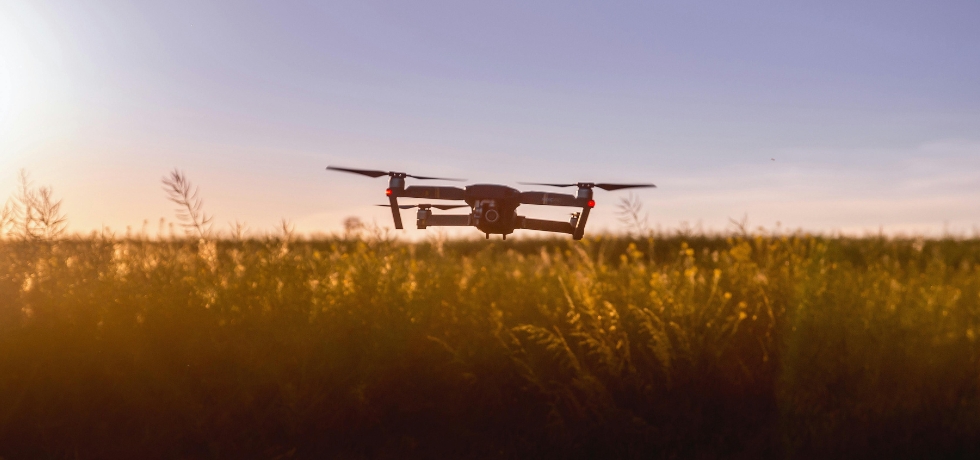- Jijo George
- 976
Sustainability
Drone Reforestation: Scaling Forest Recovery with Autonomous Tech

Image Courtesy: Pexels
In the face of escalating climate change and rampant deforestation, reforestation has emerged as one of the most scalable, nature-based climate solutions. But conventional tree planting methods—labor-intensive, time-consuming, and logistically complex—aren’t keeping pace with the urgency of global forest loss. Enter drone reforestation: an autonomous, AI-driven technology that’s quietly transforming how we restore the planet’s green lungs.
The Urgency: Why Traditional Reforestation Is Falling Short
According to the FAO’s Global Forest Resources Assessment, the planet loses about 10 million hectares of forest annually. While reforestation pledges are on the rise—think Trillion Trees Initiative and Amazon Rainforest Alliance—execution remains the bottleneck.
Manual reforestation typically requires:
-
Months of ground preparation.
-
Dozens to hundreds of human workers.
-
Limited scalability due to geographic and economic constraints.
Moreover, these efforts often suffer from low seedling survival rates due to poor soil compatibility and lack of follow-up monitoring. The result? Billions of dollars spent with questionable impact.
The Autonomous Alternative: What Is Drone Reforestation?
Drone reforestation utilizes AI-enabled UAVs (unmanned aerial vehicles) to plant seeds across degraded landscapes. These drones are equipped with:
-
Aerial mapping tech (LiDAR, multispectral sensors).
-
Seed dispersal systems with high-velocity injectors or biodegradable pods.
-
Onboard AI algorithms that optimize planting patterns based on terrain, moisture, soil type, and light exposure.
The process follows a smart pipeline:
-
Mapping: Drones survey the area using high-resolution imagery and AI modeling.
-
Data Analysis: Algorithms create a biodiversity-optimized planting plan.
-
Aerial Seeding: Drones deploy seed pods embedded with nutrients and fungi for germination.
-
Monitoring: Follow-up drones assess germination success and adapt the strategy accordingly.
This method can plant tens of thousands of trees per day, per drone—at a fraction of traditional costs.
Impact Potential: Beyond Just Planting Trees
The power of drone-based reforestation lies not only in scale, but also in precision and resilience:
1. Speed and Coverage
-
One drone fleet can reforest 100 hectares in a few days.
-
Areas once considered inaccessible—steep terrains, post-wildfire zones, conflict areas—are now reachable.
2. Biodiversity Restoration
-
Algorithms can mix species based on local ecological data.
-
Seed pods can be custom-designed for species germination needs, promoting poly-species ecosystems rather than monocultures.
3. Climate Resilience
-
Drones can monitor soil carbon levels, moisture variability, and microclimates to optimize reforestation strategies under climate stress scenarios.
The Tech Stack: What Makes Drone Reforestation Tick?
Precision Agriculture Sensors
-
LiDAR & RGB cameras provide terrain elevation and vegetation analysis.
-
NDVI (Normalized Difference Vegetation Index) helps identify viable planting zones.
AI & Machine Learning
-
Trained on geographic, topographic, and ecological datasets.
-
Algorithms determine seed viability, optimal drop points, and predictive survival rates.
Bio-Engineered Seed Pods
-
Made of biodegradable shells.
-
Embedded with mycorrhizal fungi, fertilizers, and moisture capsules.
-
Can self-regulate germination based on soil conditions.
Cloud Connectivity & Edge Computing
-
Real-time updates from the field.
-
Remote operators receive dashboards showing planting efficiency and survival metrics.
Case Studies: Who’s Doing It Right?
Dendra Systems (UK)
-
Claims to plant up to 120 seed pods per minute per drone.
-
Focuses on arid-zone reforestation with native species selection.
Flash Forest (Canada)
-
Uses compressed-air tree planting with proprietary seed pods.
-
Aims to plant 1 billion trees by 2028, focusing on post-wildfire recovery zones.
BioCarbon Engineering (Acquired by Dendra)
-
One of the pioneers in combining drone automation with ecological modeling.
These companies don’t just offer drones—they provide end-to-end ecosystem recovery as a service (ERaaS).
What’s Holding It Back?
While promising, drone reforestation still faces technical and ecological barriers:
-
Survival Rates: Aerial seeding does not guarantee seedling growth. Soil prep and irrigation remain difficult to automate.
-
Regulatory Hurdles: Many regions lack UAV-friendly airspace laws or impose strict environmental impact assessments.
-
Ecological Complexity: Restoring ecosystems is more than planting trees—it involves native fauna, fungi, and even microbial balances.
That said, hybrid models combining drone tech with local conservation knowledge are emerging to solve these challenges.
Also read: Texas Leads the Way in Renewable Energy Manufacturing
Future Outlook: Reforestation as a Scalable Climate Solution
As costs decrease and algorithms improve, drone reforestation is evolving from a niche innovation to a climate infrastructure tool.
Expect to see:
-
Federated AI models adapting drone strategies across regions.
-
Blockchain-led tree tracking for ESG reporting.
-
Intergovernmental partnerships deploying drone fleets in biodiversity hotspots.
The integration of green tech, automation, and data science is creating a future where forest recovery is not just reactive—but predictive, proactive, and persistent.
Tags:
ConservationGreen TechnologyAuthor - Jijo George
Jijo is an enthusiastic fresh voice in the blogging world, passionate about exploring and sharing insights on a variety of topics ranging from business to tech. He brings a unique perspective that blends academic knowledge with a curious and open-minded approach to life.
Popular Post





